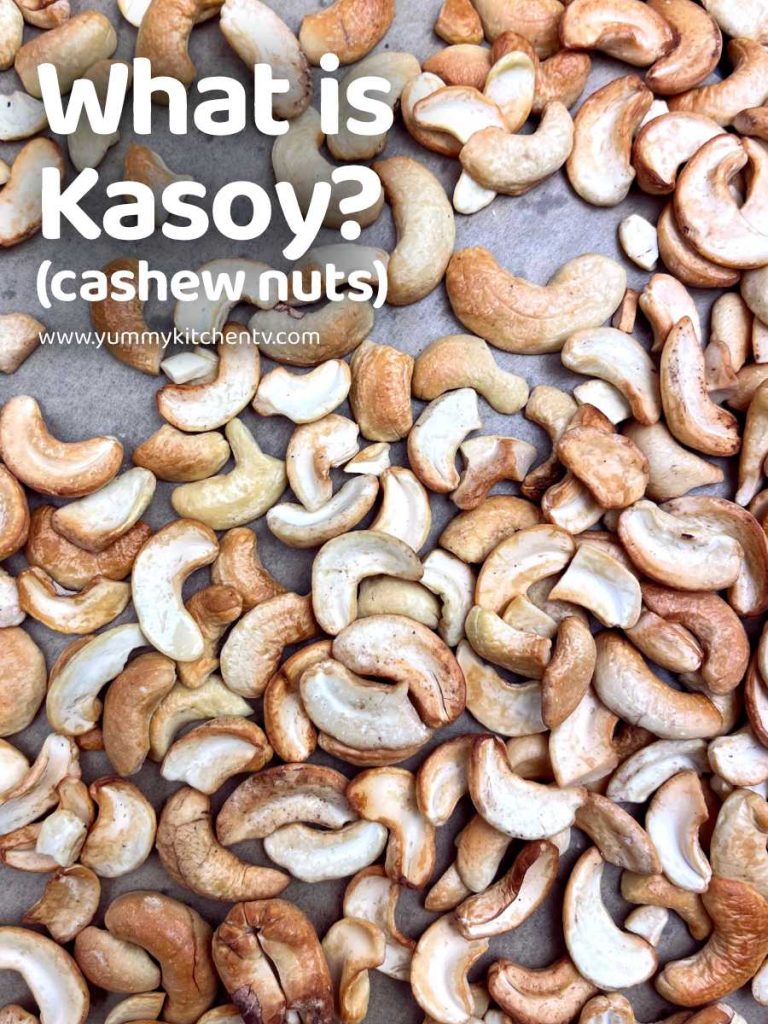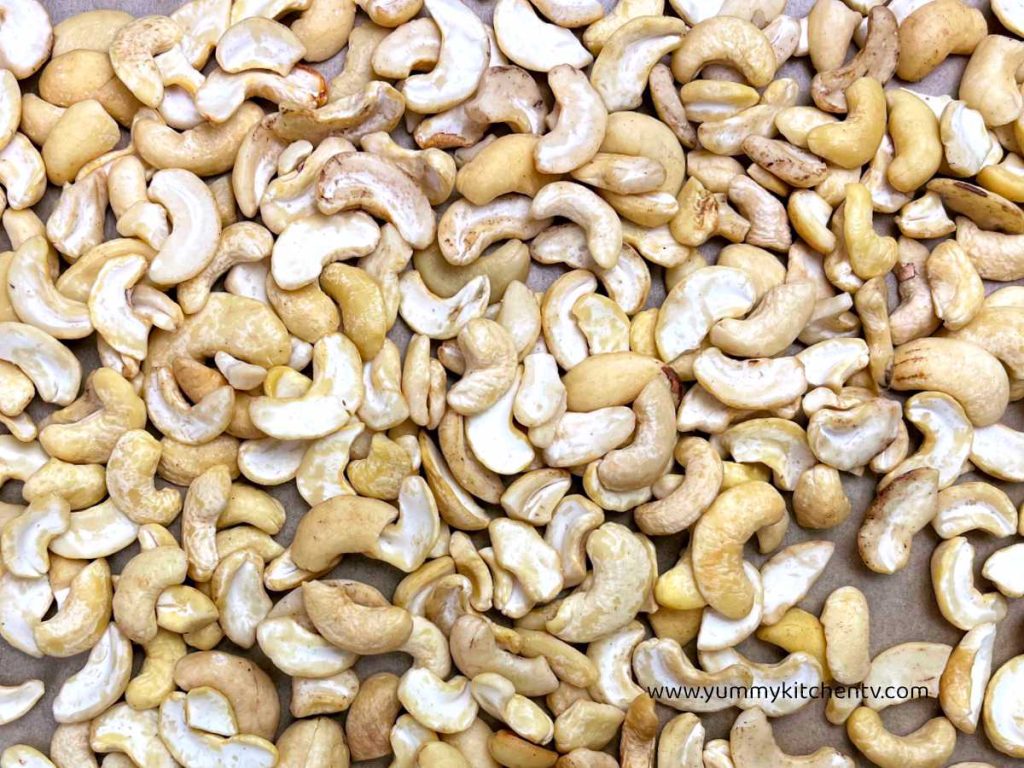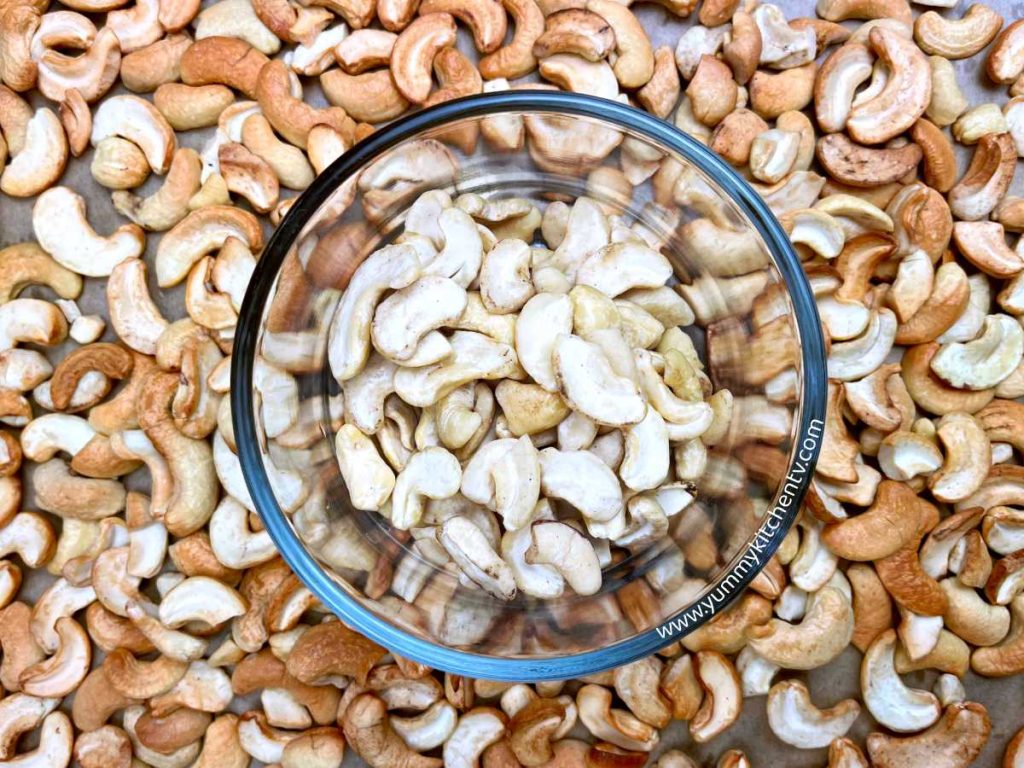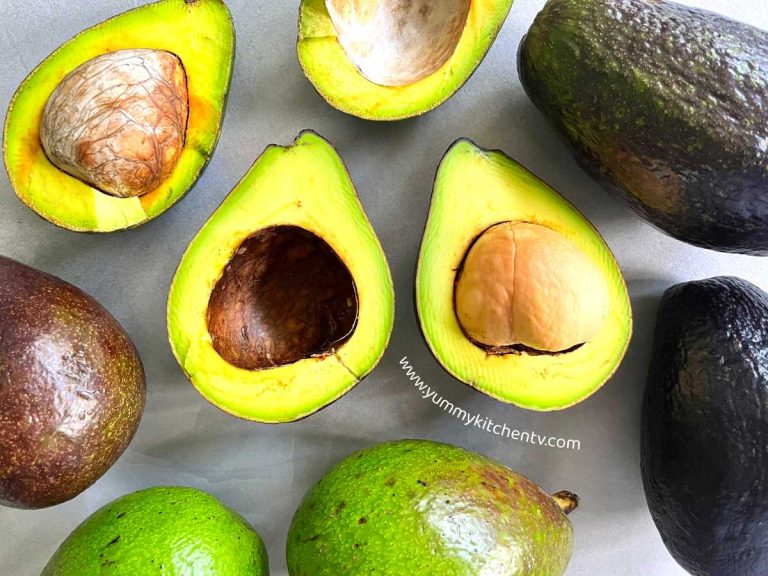Kasoy (Cashew nuts)
Kasoy (cashew nuts) from the tropical evergreen cashew tree “Anacardium occidentale” is a South American and Brazilian native plant that can grow as high as 14 meters, but also has more profitable dwarf cultivar that grows to a height of 6 meters. Though these are known as a ‘nut’ these are actually more of a ‘seed’ that grows from the cashew apple (fruit), an edible seed that contains many beneficial vitamins and nutrients like fiber, healthy fats, and protein. A small tasty treat that can be eaten wherever and whenever, made into a number of edible products, added into baked goods or topped over savory dishes. In this article we’ll know more on how these ‘nuts’ became so popular and different ways you can enjoy Kasoy (cashew nuts).

A short Introduction
Cashew fruits, or rather “Cashew Nuts” or called the scientific name “Anacardium occidentale”, are actually from a tropical tree from the evergreen family that can grow to a height of 14 meters, bears fruit after 3 years, and needs a full 8 years for a commercialized harvest during the months of February and May annually. Recent experimentation has also shown that the dwarf cashew trees triple the production and are more profitable, the season for why most farms grown this cultivar more often. A Northwestern Brazil native plant that has now traveled to almost all parts of the world with India and the Ivory Coast being the recent top producers of these nuts, followed by the Philippines, Burundi, and Vietnam.
Fun Fact: The nuts we know are actually seeds that come out of the “cashew apple” which is known as an “accessory fruit” produced by the tree. What’s so different about this fruit? It actually does not form until the nut has developed, thus being called an ‘accessory fruit’. Cashew fruits look like small misshapen thin apples with light green to coral red skin, which is why they are called ‘cashew apple’ though the nuts come out on the ends, the flesh inside of the fruit is pulpy, fibrous, and sweet. These do not transport well as it ripens quickly after being separated from the tree. Instead those who do use the fleshy pulp to ferment into jellies, jams, juices or alcoholic beverages, are known to grow or buy them locally.
Picked by hand, detached from the fruits, sundried, sometimes roasted before being sold commercially. The smooth slightly c-curved nuts are mild in flavor, and more so known for its creamy texture, and being low in fats. Commonly found in Southeast Asian and South Asian cuisine. Eaten raw, toasted, roasted with flavorings, bought in packs as a whole or split, turned into one of the ever growing in popularity non-dairy milk options cashew milk, or the savory creamy goodness cashew butter, pressed into oils, or made to cashew cream (kasoy cream), a nut that has been taking the vegan world by storm especially the recipe “cashew cheese” which is a mix of cashews softened in water then blitz with powdered aromatics like garlic and onion, with some additional spices, and nutritional yeast which is the main component to make it look and taste like cheese, aside from the recent non-dairy products, you can still find them in baked goods like brownies other confections as a topping, filling, or garnish, added into savory goods like chicken or rice as, mixed into vegetarian dishes or trail mix for a quick snack. Non-edible uses of the Cashew also include, using the shell of the seeds to create waterproofing, insecticide, lubricants, paints, plastic, and starting from World War II, it was used in arms production.

Cashew Benefits (kasoy benefits)
A great choice for those who want to add protein into their diet. There are many benefits of the kasoy fruit, aside from being a great tasty snack for those with high cholesterol and gastrointestinal problems, looking to lose weight, or for a healthier heart. While you can eat them raw, they are best eaten after they are roasted or tasted from the oven or pan for more flavor and to remove any possible ‘toxins’. Here are a list to show how are cashew nuts good for you:
- These can help with weight loss. Adding nuts, especially these low calorie creamy nut into your diet provides fiber and protein, which helps with keeping the body feeling fuller for longer.
- Benefits those with type 2 diabetes. Because it is high in fiber it can help prevent blood sugar spikes by lowering insulin levels.
- Can improve heart health, nuts are one of the most popular ingredients added into many diets of people with heart problems. Studies have found that nuts are linked with helping lower blood pressure, cholesterol, and triglycerides that is great for the heart.
- A high in copper ingredient/food, which is needed by the body to reduce the risk of osteoporosis. Eating a few cashews a day can help with bone density and even collagen maintenance which helps heal connective tissues.
* Kasoy oil for warts: though the said oil is sold as a natural wart and skin tag remover, helps with itchiness, scabies, calluses, and other infections. The FDA (Food and Drug Administration) in the Philippines advises most to stay away from the oil being sold as this is unregistered and the effects have not been guaranteed and tested properly. One example is the oil sold by Angel Touch, ANYTHING from this brand has not properly gone through procedures and has no proper authorization.
* Kasoy oil side effects (masamang epekto ng kasoy): the oil wart remover can cause problems such as dryness, burning or skin irritation, diarrhea and vomiting, shortness of breath, sever headaches, and might cause you to pass out.
* Kasoy cream for warts, is kasoy cream safe? The cream or ‘Dewart’ or ‘Demole cream’ is said to help with warts especially plantar warts as these have anti-fungal and antiviral properties. Made by Ronaldo de la Cruz from the Philippines, who has received an award in the 2000’s for the product being an “Outstanding Invention” the cream he made is also said to help with skin tags, keloids, and syringomas. And since then has made clinics for these problem areas in the Philippines, Malaysia, Indonesia, Singapore, the United States and Brunei. Though do consult a doctor before using this if this cream is suitable for your skin.
* Do note: that those with nut allergies might need to avoid these nuts as it might cause joint swelling, skin irritation, and more problems. Do consult your doctor if there are any reactions.

Kasoy (cashew nuts) found in the Philippines?
The buto ng kasoy in English “Cashew seed” shortened to “Kasoy” or spelled as “Kasuy”, is a popular commodity in the nut market. In the Philippines, the biggest producer (around 90% of the country’s total supply) of kasoy is found in the province of Palawan. It’s so abundant there that it is called ‘OTOP’ or ‘One Town, One Product’ of the province. While the number of profits has been decreasing due to the lack of motivation from the lack of return, and the cashew apple flesh being underutilized or thrown away. A number of studies are now trying to find ways to increase the income by creating more producers from the fruit itself like kasoy wines, james, jellies, prunes, and fermented alcoholic drinks, and many more.
Kasoy (cashew nuts) is very much beloved that it even has its own story of how it appeared. “Ang alamat ng Kasoy” or “the story of the Kasoy came to be” starts with the seed actually growing inside the fruit instead of growing outside like now. The seed was sad and lonely being hidden in the dark, it even got lonelier after a party by Adang Kagubutan who invited all plants and animals to join. The event was lively and enjoyed by everybody with everyone singing and dancing. The lonely nut felt bad and whispered about wanting to join in the fun. Adang Kagubatan heard that nut, asking what would make it happy, to which the kasoy answered ‘that it was jealous of everyone being able to have fun, and wanted to be able to join in and see what was happening’. Adang had mercy and granted its wish. The seed was now outside the fruit able to see the fun gathering of animals and plants singing and dancing together. But after midnight struck and the party started to die down, the animals started to go home to their caves to rest, with the plants rooting themselves back to the ground. The kasoy felt sad as it was alone once again, now outside the fruit freezing from the cold winds, asking Adang to put it back. Adang did not listen, as if to show that one has to ‘be careful of what you wish for’.
Though the story was a bit sad, the nut has seen a growth in popularity not only during Christmas where it’s turned into a popular dessert (such as the recipes below) and has seen new heights in sales in the recent years ever since the pandemic where a healthier lifestyle has been pushed. You can find them in many grocery stores and online stores sold raw, roasted with garlic or adobo powder, in Filipino dishes and desserts, a popular one being ‘Sans rival’ which is a buttery, silky, creamy dessert with layers of fluffy cakes, french buttercream, roasted or candied cashews to be made into a delightfully delicious confection or, the smaller snack version called ‘Silvanas’ which is a buttery frozen dessert made of butter cream cashews crushed or candied, dusted with graham crumbs. A delicious treat that many kids and adults love.
Kasoy (cashew nuts) Recipes:






